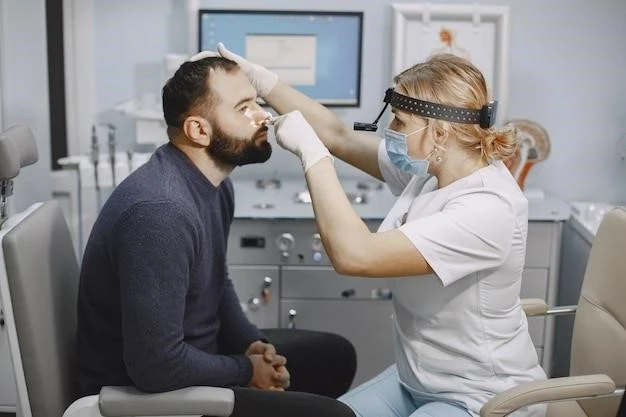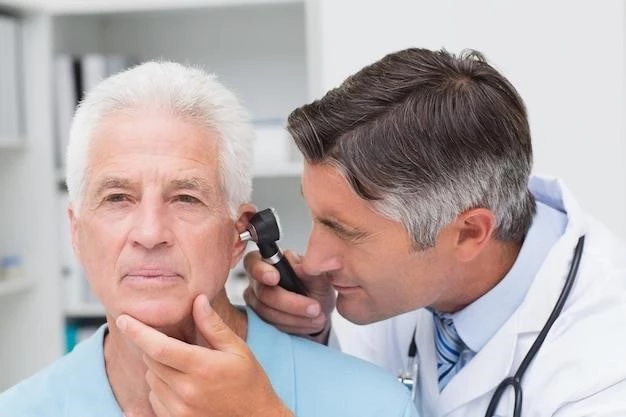Introduction
Oculopharyngeal muscular dystrophy (OPMD) is a rare genetic disease that causes muscle weakness in your eyelids and throat‚ affecting speech‚ swallowing‚ and vision. Symptoms typically manifest in adulthood‚ around age 40-50‚ with a gene mutation in the PABPN1 gene. Treatment may involve therapies‚ injections‚ surgery‚ and tube feeding.
Definition of Oculopharyngeal Muscular Dystrophy (OPMD)
Oculopharyngeal muscular dystrophy (OPMD) is a rare genetic disease characterized by muscle weakness in the eyelids and throat‚ impacting speech‚ swallowing‚ and vision. It typically manifests in adulthood‚ around age 40-50‚ due to a gene mutation in the PABPN1 gene. This condition presents challenges in diagnosis and management‚ often requiring a multidisciplinary approach for effective treatment.
Clinical Presentation
Oculopharyngeal muscular dystrophy (OPMD) typically presents with muscle weakness in the eyelids and throat‚ affecting speech‚ swallowing‚ and vision. Symptoms often start in adulthood around age 40-50 and progress gradually‚ impacting daily activities.
Symptoms and Age of Onset
OPMD typically manifests in adulthood‚ around age 40-50‚ with symptoms including muscle weakness in the eyelids and throat leading to difficulties in speech‚ swallowing‚ and vision. Ptosis (drooping eyelids) and dysphagia (difficulty swallowing) are common early signs of the disease‚ often progressing gradually over time.
Clinical Characteristics and Diagnostic Challenges
Oculopharyngeal muscular dystrophy (OPMD) presents with characteristic clinical features like ptosis and dysphagia due to selective muscle involvement. However‚ diagnosing OPMD can be challenging due to overlapping symptoms with other neuromuscular diseases. Physicians rely on a detailed patient history‚ clinical evaluation‚ and identification of specific findings like droopy eyelids to confirm OPMD diagnosis accurately.
Oculopharyngeal muscular dystrophy (OPMD) is caused by a gene mutation in the PABPN1 gene‚ leading to muscle weakness in the eyelids and throat. This mutation results in characteristic clinical manifestations affecting speech‚ swallowing‚ and vision.
Gene Mutation in PABPN1 Gene
Oculopharyngeal muscular dystrophy (OPMD) results from a gene mutation in the PABPN1 gene. This mutation causes muscle weakness‚ particularly in the eyelids and throat‚ impacting speech‚ swallowing‚ and vision.
Inheritance Patterns
Oculopharyngeal muscular dystrophy (OPMD) can be an autosomal dominant or autosomal recessive inherited disease. It predominantly affects individuals between 40 and 50 years old‚ with a higher prevalence in French-Canadian descent and Hispanic residents.
Autosomal Dominant and Autosomal Recessive Inheritance
Oculopharyngeal muscular dystrophy (OPMD) can be inherited in an autosomal dominant or autosomal recessive pattern. While the disease typically manifests in individuals aged 40-50‚ it is more prevalent in specific ethnic groups like French-Canadian and Hispanic residents.
Prevalence and Demographics
Oculopharyngeal muscular dystrophy (OPMD) is a rare genetic condition that primarily affects individuals of French-Canadian descent and Hispanic residents. Typically‚ symptoms manifest in adulthood‚ around age 40-50‚ and may involve muscle weakness in the eyelids and throat‚ impacting speech‚ swallowing‚ and vision.
Commonality in French-Canadian Descent and Hispanic Residents
Oculopharyngeal muscular dystrophy (OPMD) is more prevalent in individuals of French-Canadian descent and Hispanic residents. The disease typically manifests in adulthood‚ around age 40-50‚ with muscle weakness affecting the eyelids and throat‚ leading to difficulties in speech‚ swallowing‚ and vision.
Muscle Weakness Progression
Oculopharyngeal muscular dystrophy (OPMD) leads to progressive muscle weakness in the eyelids and throat‚ affecting speech‚ swallowing‚ and vision. Symptoms typically emerge in adulthood‚ around age 40-50‚ with gradual progression over time.
Affects on Eyelids‚ Throat‚ and Proximal Limbs
Individuals with Oculopharyngeal muscular dystrophy (OPMD) experience muscle weakness primarily in the eyelids and throat‚ impacting speech‚ swallow function‚ and vision. As the disease progresses‚ proximal limbs may also be affected‚ leading to challenges in mobility and daily activities.

Disease Management
Treatment for Oculopharyngeal muscular dystrophy may involve a multidisciplinary approach including occupational therapy‚ physical therapy‚ speech therapy‚ botulinum toxin injections‚ surgery‚ and tube feeding.
Treatment Approaches⁚ Therapy‚ Injections‚ Surgery‚ and Tube Feeding
The management of Oculopharyngeal muscular dystrophy (OPMD) may involve various treatment approaches including physical therapy‚ occupational therapy‚ speech therapy‚ botulinum toxin injections‚ surgical interventions‚ and tube feeding to address the muscle weakness in the eyelids and throat‚ as well as difficulties in speech‚ swallowing‚ and vision.
Impact on Daily Life
Individuals with Oculopharyngeal muscular dystrophy (OPMD) face challenges in vision‚ speech‚ swallowing‚ and mobility due to muscle weakness in the eyelids‚ throat‚ and limbs. These difficulties can significantly impact daily activities and quality of life.
Challenges Faced in Vision‚ Speech‚ Swallowing‚ and Mobility
Individuals with Oculopharyngeal muscular dystrophy (OPMD) encounter difficulties in vision‚ speech‚ swallowing‚ and mobility due to muscle weakness affecting the eyelids‚ throat‚ and limbs. These challenges impact daily activities and may require personalized management approaches.

Research Advances
Recent developments in the understanding and treatment of Oculopharyngeal muscular dystrophy (OPMD) have been focused on exploring innovative therapies‚ including ongoing clinical trials of Trehalose for OPMD. Research efforts aim to improve management strategies and potentially find a cure for this rare genetic disease.
Current Developments in Understanding and Treating OPMD
Recent advancements in Oculopharyngeal muscular dystrophy (OPMD) research aim to enhance understanding and treatment options. Initiatives include investigating innovative therapies and conducting Phase III clinical trials with Trehalose‚ showing promising potential for managing OPMD. These developments signify progress towards improving care and outcomes for individuals with OPMD.
Associations and Support Groups
The OPMD Association plays a crucial role in advocating for individuals with Oculopharyngeal muscular dystrophy (OPMD) by providing educational resources‚ programs‚ and promoting research collaborations to advance treatments and potentially find a cure. This dedicated organization operates as an all-volunteer effort‚ offering support and information to individuals and families affected by OPMD.
Role of OPMD Association in Advocacy and Resources
The OPMD Association serves as a valuable advocate‚ providing educational resources‚ programs‚ and research collaborations to advance understanding and treatment for individuals affected by Oculopharyngeal muscular dystrophy (OPMD). This organization plays a crucial role in supporting and empowering individuals and families impacted by OPMD.
Complications and Prognosis
Individuals with Oculopharyngeal muscular dystrophy (OPMD) may face potential risks and long-term outlooks related to muscle weakness in the eyelids and throat‚ impacting vision‚ speech‚ swallowing‚ and mobility. Prognosis can vary‚ and managing complications is essential for maintaining quality of life.
Potential Risks and Long-Term Outlook for Individuals with OPMD
Individuals with Oculopharyngeal muscular dystrophy (OPMD) may encounter various risks related to muscle weakness in the eyelids and throat‚ impacting functions like vision‚ speech‚ swallowing‚ and mobility. The long-term outlook for individuals with OPMD can vary‚ requiring personalized management and care to address potential complications and maintain quality of life.
Therapeutic Innovations
Oculopharyngeal muscular dystrophy (OPMD) research explores the potential of innovative treatments like Trehalose‚ currently in Phase III clinical trials. These therapeutic innovations aim to address muscle weakness in eyelids and throat‚ offering new hope for managing OPMD effectively.
Exploration of Trehalose in Phase III Clinical Trials for OPMD
Trehalose is currently being explored in Phase III clinical trials for Oculopharyngeal Muscular Dystrophy (OPMD). This innovative therapy shows potential in managing the muscle weakness associated with OPMD‚ offering hope for improved treatment outcomes.
Conclusion
In conclusion‚ Oculopharyngeal Muscular Dystrophy (OPMD) is a rare genetic disease that primarily affects muscle weakness in the eyelids and throat‚ impacting various functions such as speech‚ swallowing‚ and vision. Through ongoing research and therapeutic innovations like the exploration of Trehalose in Phase III clinical trials‚ there is hope for improved treatment outcomes and potentially finding a cure for this challenging condition. The support provided by associations and advocacy groups plays a crucial role in enhancing the quality of life for individuals with OPMD. Moving forward‚ continued efforts in understanding and managing OPMD are essential to offer better care and support to those affected by this disease.
